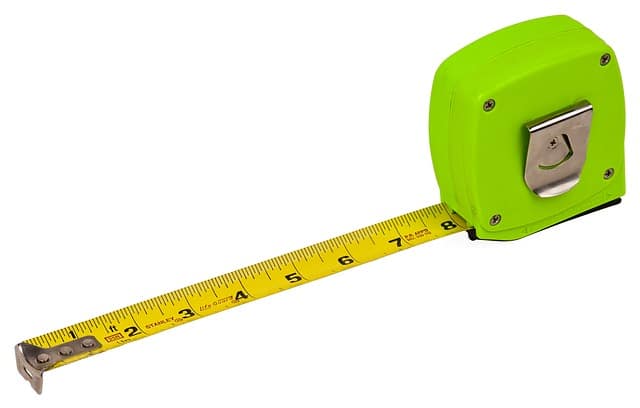
Tape measure is used to measure lengths.
Originating in the Latin metrĭcus , the concept of metric allows us to describe that which belongs to or is related to the meter . This can, in turn, refer to the unit of length of the International System or to the measurement that a verse has.
In the first case cited, we can establish that said metric system is characterized by two fundamental issues: that it has several units of measurement and that these are related to their multiples and submultiples of 10. Regarding the units, we have to make it clear that the basic magnitudes are three: length, time and mass.
Tape measure and metric ton
Starting from this we would have to refer to other concepts that use the term metric as a basic part. This would be the case of the well-known tape measure , which is one that is characterized by having marked, longitudinally, what the aforementioned units are as well as their corresponding divisions.
Along these same lines we also find what is known as the metric ton . This has the letter “t” as its symbol and is defined as a weight that is made up of a total of exactly 1,000 kilos. No less unique is the metric ton of tonnage, which is equivalent to one cubic meter.

Metric refers to that linked to the meter.
The concept in poetry
In poetic matters, therefore, we speak of meter when describing the art that is dedicated to the analysis of the measurement and structure of each verse. Meter examines the rhythmic constitution of the elements of a poem . In the case of prose, it is defined as rhythmic prose.
It should be noted that there are multiple types of metrics. The Spanish meter , to cite one case, includes a fixed number of syllables and a specific distribution of accents. The Greco-Latin meter , the Hebrew meter and the Germanic meter , among others, have their own mechanisms for the construction of rhythm.
The study of metrics
In this sense, it is very important to know that the meter when analyzing and studying any poem basically uses three axes or central pillars: the poem itself, the stanzas that compose it, and the verses that give it shape.
However, although in general terms these are the three most important aspects that give meaning to the work of metrics, when carrying it out, other equally relevant issues must be considered. Among them would be the syllables, the accents and the corresponding rhymes.
Different kinds of verses can be mentioned depending on the meter. The verses that end with an acute word are the oxytones , the verses ending with a grave word are the paroxytones and the verses that end with an esdrújula word are the proparoxytones .
Meter defines stanzas as the group of verses that have a pre-established distribution of syllables and rhymes that is reiterated regularly throughout a given poem. The Spanish meter includes stanzas of between two and thirteen lines.
Other uses of the notion
In another sense, mathematics takes advantage of the concept of metric to identify any function that manages to define a distance within a metric space.
In computer engineering , metrics are understood as the measurement that allows an information system or software to be recognized.
